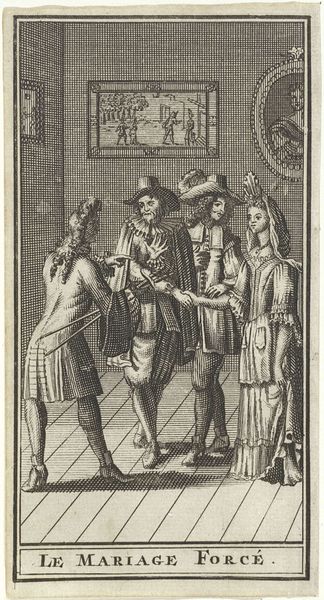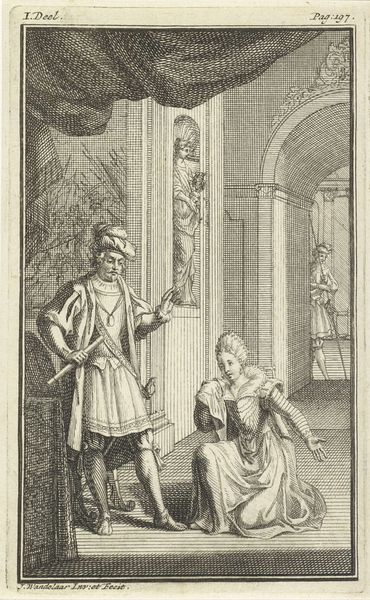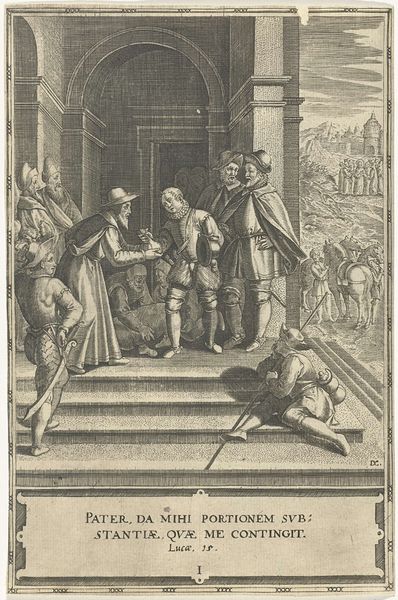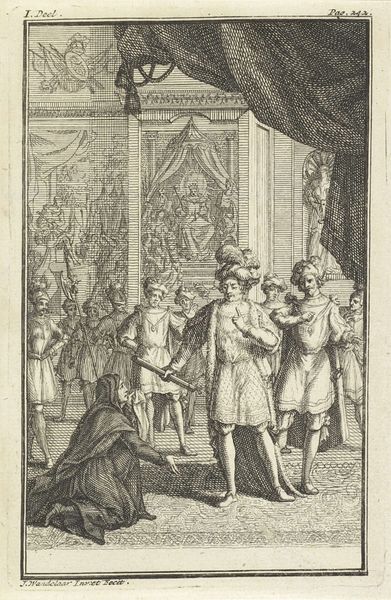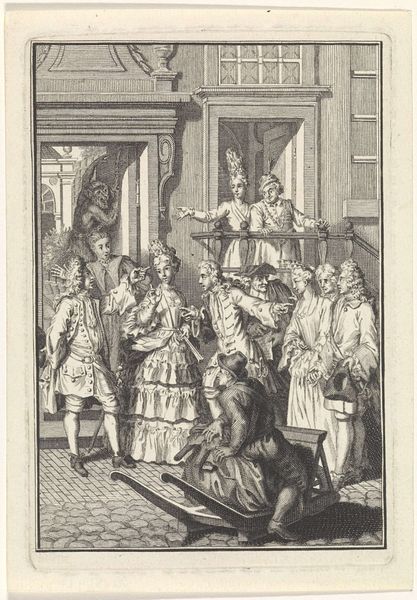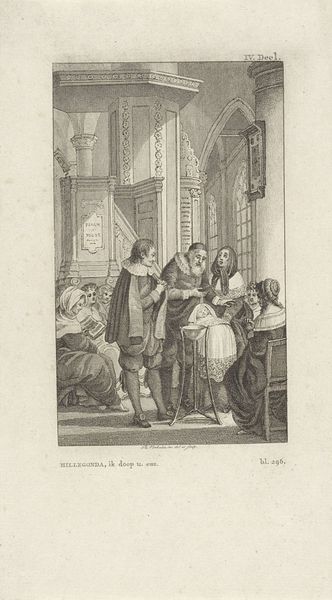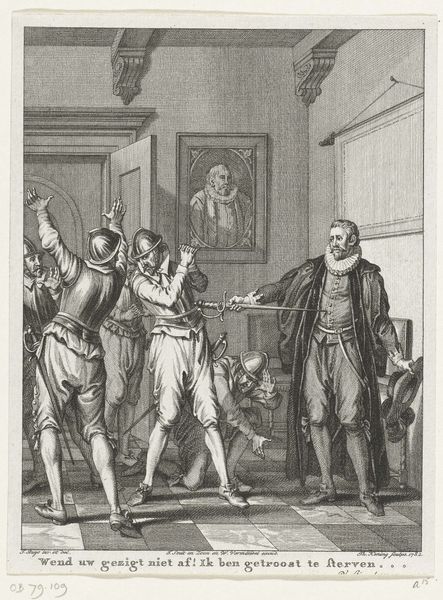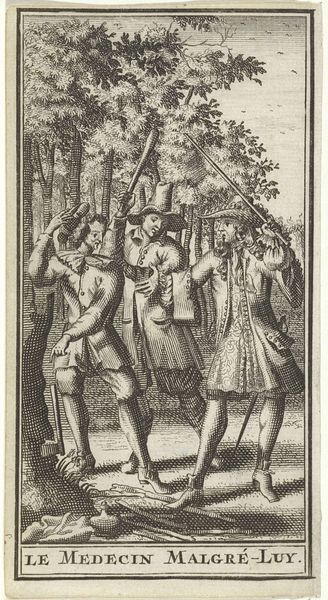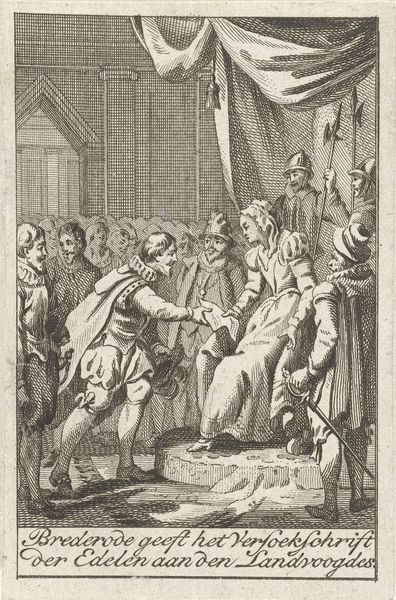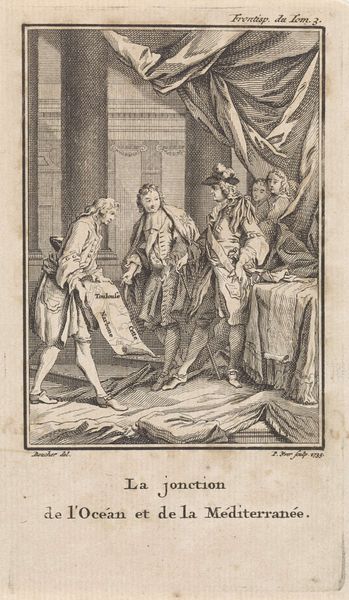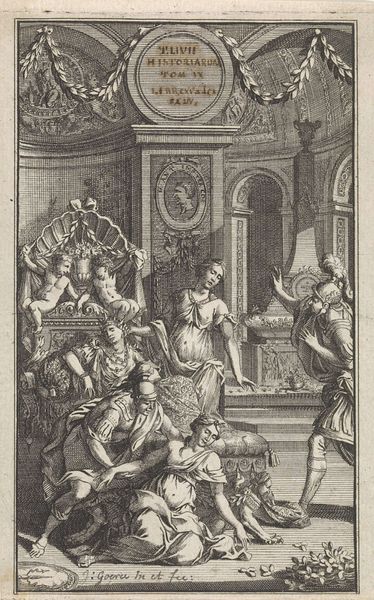
print, engraving
#
portrait
#
baroque
# print
#
old engraving style
#
caricature
#
portrait drawing
#
genre-painting
#
engraving
Dimensions: height 130 mm, width 70 mm
Copyright: Rijks Museum: Open Domain
Curator: This print, titled "De Vrek", which translates to "The Miser," was created by Gilbert Schoute in 1713. It exemplifies the style of portraiture common in Baroque period engravings. Editor: The starkness of the engraving gives it a certain weight, doesn't it? It feels so precise, like every line was a deliberate choice. Curator: Indeed. Schoute was likely commenting on social status and wealth disparities in 18th-century society. The image feels theatrical, doesn't it? The figures seem to occupy a stage-like space. Editor: Definitely, and notice how much of the detail is lavished on the clothing, compared to the almost caricatured faces. Look at how that stark economy translates into commentary on craft versus the more fleeting status symbols. Curator: A sharp observation. There's an emphasis on line and form typical of engravings. What really stands out to me is how the figures' postures suggest their roles in the drama. We can really see class relations in the positioning. Editor: And the materials, thinking about the tools Schoute used – the metal plate, the burin – things intended for durability, pressed into service to show something far more flimsy: reputation. Curator: It’s powerful how such simple materials, a plate and ink, are able to make such an effective socio-political observation. I am reminded of the way these prints were reproduced en masse and distributed, shaping public opinion. Editor: Exactly! The transformation of base metal into art that subtly critiques societal imbalances– it really is something. A quiet testament to art's capacity to dissect even something as ingrained as class. Curator: I appreciate how considering both its historical context and tangible components has deepened our experience with this piece. Editor: Agreed, thinking about both the maker’s labor and societal intent truly helps to unpack an otherwise, somewhat overlooked image.
Comments
No comments
Be the first to comment and join the conversation on the ultimate creative platform.
